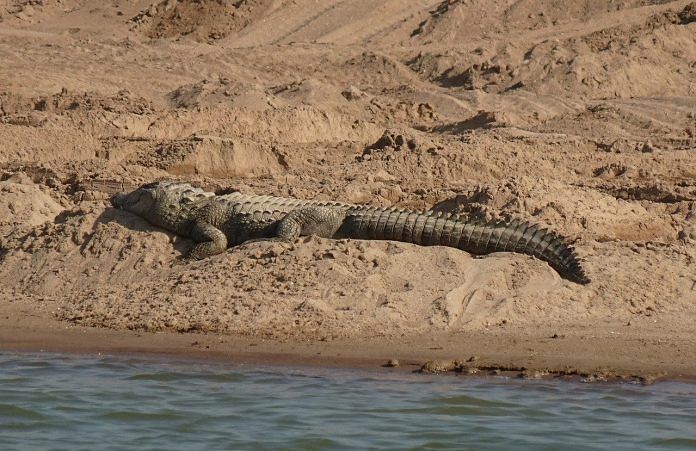2020 tops a very hot half decade
The year 2020 was the warmest year ever recorded, tying it with 2016, which was the previous record-holder, according to The Copernicus Climate Change Service, which is the European Union’s Earth Observation Programme.
This despite the occurrence of La Niña, a weather phenomenon that has a cooling effect on global temperatures.
The last six years on the calendar have all been the six hottest years on record. The announcement confirms a global warming trend, and also highlights the need for countries to reduce the emissions of greenhouse gas, which are responsible for global warming.
The Copernicus Climate Change Service recognises that some data discrepancies or differences in methodologies may mean that temperatures in 2020 were not precisely the same as 2016, but nevertheless there is no denying that the Earth is getting warmer.
Read more about it here.
Earth is spinning faster than usual
The Earth may be spinning much faster than usual of late, with the planet now completing its rotation in 1.4602 milliseconds less than the usual 86,400 seconds.
Several scientists pointed out that 2020 saw some of the shortest days ever recorded.
The change in Earth’s spin may not be a cause of worry for planetary scientists. Planetary spin is known to be influenced by several factors such as the moon’s pull, snowfall levels and mountain erosion. In fact, global warming might push the Earth to spin faster as the snow caps begin to disappear.
But since the Earth’s spin is considered to be the standard by which time is marked, computer scientists are concerned because much of modern technology is dependent on what is known as ‘true time’. The difference in Earth’s spin may end up causing problems, which is why some scientists are now suggesting shifting the world’s clocks from solar time to atomic time, which uses frequencies of electromagnetic waves to define time.
For more about it, read here.
Why crocodiles have not changed over millions of years
Scientists have explained in a new study as to why crocodiles have changed so little since the age of the dinosaurs.
Crocodiles today look very similar to ones from the Jurassic period some 200 million years ago. In fact, crocodiles lack the diversity of other animals as there are only very few species of them.
New research suggests that evolution of animals speeds up when the climate is warmer, and that their body size increases.
But in the case of crocodiles, the reptiles already had a body plan that was very efficient and versatile. They did not need to change in order to survive.
This could also explain why crocodiles survived the meteor impact 66 million years ago that wiped out dinosaurs. Crocodiles generally thrive better in warm conditions because they cannot control their body temperature and require warmth from the environment.
The climate during the age of dinosaurs was warmer than it is today, and that may explain why there were many more varieties of crocodile than we see now. Being able to draw energy from the sun means they do not need to eat as much as a warm-blooded animal like a bird or a mammal.
Read more about it on the Independent.
Fresh evidence shows Neanderthals buried their dead
Analysing a 41,000 year-old skeleton of a Neanderthal child found in a French cave in the 1970s, provides fresh evidence that the ancient human relatives buried their dead.
Whether or not Neanderthals buried their dead has been a topic of a long-standing debate. How Neandethals behaved could shed light on their cognitive abilities and whether, like modern humans, they were capable of symbolic thought.
Dozens of buried Neanderthal skeletons have been discovered in Europe and parts of Asia over the course of 150 years. But most weren’t excavated using modern methods, which made it difficult to determine whether these bodies had been deliberately buried.
Researchers re-examined the remains using modern high-tech methods and concluded that the corpse of a two-year-old Neanderthal was deliberately laid in a pit dug in the sediment.
The position of the skeleton also suggested the child had been placed there intentionally. The head, which pointed to the east, was raised higher than the rest of the body even though the land inclined to the west.
Read more here.
Why woodpeckers don’t get stuck to trees
High-speed videos of two woodpeckers helped researchers understand why their beaks don’t get stuck in tree trunks.
Consider the fact that when a nail is hammered into a tree trunk, it gets stuck. But the same does not happen with the woodpeckers beak.
For a long time, scientists thought that woodpecker beaks would need to be rigidly attached to the skull to successfully drill into the wood. But analysing videos of woodpeckers frame by frame to see how the head and beak moved throughout each peck revealed that the birds have the ability to move its upper and lower beaks independently.
Once the tip of the woodpecker’s bill hits the wood, the bird’s head rotates slightly to the side. The woodpecker lifts the top part of the beak and twists it a bit in the other direction. As a result, there is a free space between the beak tip and the wood, so the bird can then easily retract its beak from the punctured hole.
Read more here.



